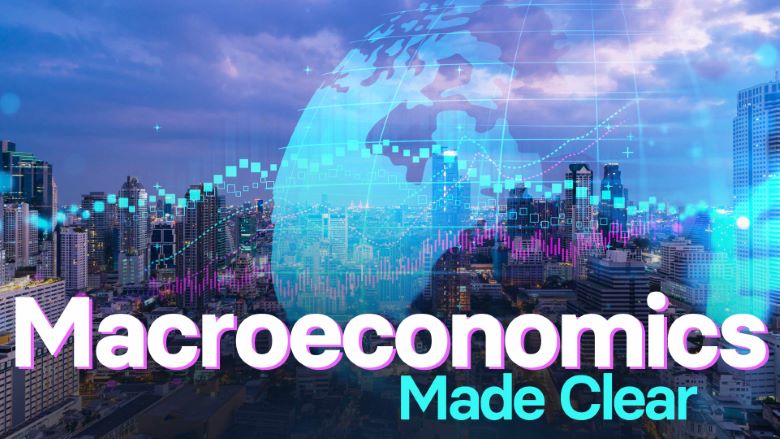در حال حاضر محصولی در سبد خرید شما وجود ندارد.

The issues addressed by macroeconomics are all around you, all the time—from taxes to inflation to mentions of GDP on the nightly news. By learning the principles of macroeconomics, you’ll be able to go beyond simply hearing the terms to better understanding their relationships to each other and how they create the economic environment in which you live. In fact, macroeconomics with its “big-picture glasses” allows you to better ask—and better try to answer—the biggest questions of our time, questions that impact the lives of billions of people.
In 24 revealing lectures, Macroeconomics Made Clear will introduce you to the subject that people have been theorizing about and modeling for almost 100 years. With easy-to-understand visuals and examples, Dr. Akila Weerapana of Wellesley College shows you the real-world applications of the key ideas in macroeconomics. Dr. Weerapana shows you how macroeconomics offers a hopeful tool for the future and sheds light on what we observe now. He focuses on the beginning of macroeconomics when the new field tried to explain the causes of the Great Depression, subsequent business cycles, the COVID-19 pandemic with its economic impacts, and several of our greatest global challenges of today.
The People behind the Math
When we think about macroeconomics, images of equations, symbols, and models may come to mind. While those do depict the work of macroeconomics, behind all the math are real people trying to figure out something about the world they see around them.
What happened to cause the Great Depression and how can we prevent such a severe economic collapse from happening again? Why are two countries that are so similar in so many ways—even sharing one small island in the case of Haiti and the Dominican Republic—so very different in the quality of life experienced by their populations? Are masses of people destined to live in poverty while a few live in luxury or could we develop policies that really make a difference for everyone? These are the questions that drive macroeconomists.
In this course, you’ll meet many of the most influential people behind the equations, economists who have changed our understanding of the way the world works. These economists include:
As you meet these and other influential economists, you will also see how there is no singular model for economic success—There are different theories and varied solutions to the challenges facing modern economies.
Models
Macroeconomists do not have the option of running their experiments in the real world; no country’s central bank is going to change their monetary policy to help a university professor test out a new theory. Instead, macroeconomists create mathematical models. Just like maps, these models preserve the main structures to be considered, while omitting the thousands of smaller features that exist in the real world. Macroeconomic models test what happens when one variable changes against another over time, when an altogether new variable is added into the mix, when government regulations change the value of a constant, and more.
In Macroeconomics Made Clear, Dr. Weerapana introduces you to the most significant macroeconomic modeling concepts in order to help you visualize the most interesting “what if” questions in economics. These models include:
Current Challenges
Macroeconomic models are excellent tools for explaining past economic crises or putting forth policy ideas about how to address a current recession. But even more important, they can help us address some of the defining economic challenges of our time, such as:
Dr. Weerapana makes it clear that even macroeconomists who have spent decades studying the economy are not likely to find easy agreement on solutions to these three challenges; the problems are complicated and the solutions seemingly politically intractable. But in the conclusion of the course, he considers ways to address the most pressing issue: climate change. He discusses a potential carbon tax on either emitters or energy users, what the dollar amount of that tax should be, and the ways in which a carbon tax could spur technological innovation and subsequent economic growth.
In addition, Dr. Weerapana encourages you to take the principles that you learn in Macroeconomics Made Clear and begin to view the world around you through those lenses. He suggests that doing so can be a small, but important, step toward creating a global economy in the coming decades which will transform the lives of people in an equitable manner, for the better.
در این روش نیاز به افزودن محصول به سبد خرید و تکمیل اطلاعات نیست و شما پس از وارد کردن ایمیل خود و طی کردن مراحل پرداخت لینک های دریافت محصولات را در ایمیل خود دریافت خواهید کرد.